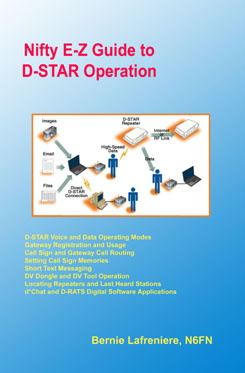The ICOM ID-800 is a very common D-STAR radio, and for good reason: it includes the digital functionality, dual-band operation, and a remote-able head. It’s much easier to mount a small head unit in view than an entire radio, with all the antenna and data cabling that is required. In my Jeep, I have the ID-800 base unit under the driver’s seat, bolted to the floor, with all the cables neatly run under the carpet from the various places (antenna, battery, GPS).
Until recently, I had the head mounted with some industrial-strength adhesive velcro to the center of the visor trim panel. There was a nice blank spot there and it’s a good location for the head, visibility-wise. Unfortunately, ICOM does not make (or no longer makes) a mounting plate for the radio, which means you’re pretty much stuck with some sort of adhesive mounting solution. This is bad for many reasons, but most notably:
- The head won’t fit back on the base of the radio with the velcro (or the messy gook the adhesive leaves behind) in place
- Nobody wants to glue stuff to a $500 radio
- In the summer, almost any adhesive that will be removable down the road will turn to grape jelly in the heat of the summer
In fact, point three in the above list is what drove me to make a change. I had replaced the velcro once already this summer, and didn’t feel like making the process a twice-yearly event.
In the newer radios, ICOM has made a huge improvement: magnetic head units. By affixing magnets to the back,all you need to do is mangle a piece of sheet metal into place and stick the radio to it. When you want to move it, you need only tug it out of place. No gook, no mess, no problem.
So, while I was chiseling the latest batch of failed grape jelly off of my ID-800’s head this weekend, I decided to see what I could do to make my unit magnetic. In order to qualify as an improvement, I set the following criteria:
- It has to be a clean modification, such that it looks reasonable and is worthy of sale someday
- It has to be adhesive-free and gook-free
- It has to allow the head to be mounted back on the base unit, should that be necessary someday
What I came up with met all three and is a major improvement, in my opinion. Note that this may void your warranty, destroy your radio, and/or wipe your hard drive (the magnets are strong). However, it’s pretty mild and works well for me.
First, I opened up the head. I was surprised and pleased to find that ICOM used actual screws to hold the unit together instead of explosive plastic clips like most of the junk nowadays. Here’s what it looks like inside:
Note all the extra space in the back cover. It may be hard to see in this picture, but it’s actually quite roomy back there. I went to Surplus Gizmos hoping to find some of the uuber-small uuber-strong rare earth magnets that look about like a watch battery. Unfortunately, they didn’t have any of those, but they did have a big pile of strong kidney-shaped magnets from hard drive motors. They looked like this:
The backing plate isn’t really part of the magnet, the two small kidney-shaped things are where the power is. The magnets themselves will happily separate from the plate and are quite thin. Their outline is larger than I wanted, but they worked out. I pulled a bunch off and loaded up the back cover with them:
Now, you’ll notice that I have the cover sitting on a piece of sheet metal. These magnets are so strong that they will literally jump across the cover to mate with each other. The sheet metal gives them something to pull on below which helps keep them in place. It took me several minutes to get these to sit flat in the cover, which is rather frustrating.
The magnets are covered in metal, so I wanted to make sure I insulated them at least a little bit from the board they would be facing from the front half of the control head. Since this part won’t be seen, once it’s together, I cheaped out here and cut some thin receipt paper to cover each magnet:

Just enough to insulate each magnet. The receipt paper is very thin and didn’t present an issue cramming it in there. Finally, I needed a way to keep the magnets in place so they didn’t wander out of their places when vibrated. I could have used (and may go back and use) some heat-tolerant glue like epoxy to affix the magnets in place, but this was an experimental thing and epoxy is very permanent. At this point, I could probably put the head back together in such a way that the warranty department wouldn’t notice or care (unless there was an issue with the head itself). Epoxy eliminates that ability forever. Anyway, I could have done just about anything here, but opted for some cotton. The cotton won’t turn to gook and is relatively inert and harmless, but provided enough tension to hold things in place. It’s just what came to mind first.
Anyhow, I screwed the case back together carefully to avoid the magnets jumping out of their places until under pressure. After it was all secure, the head is very magnetic from the outside and is more than strong enough to hold itself in place on a piece of sheet metal. I’ve got a metal mount bent into place in the Jeep, and the head is now stuck there by the magical force itself.



















